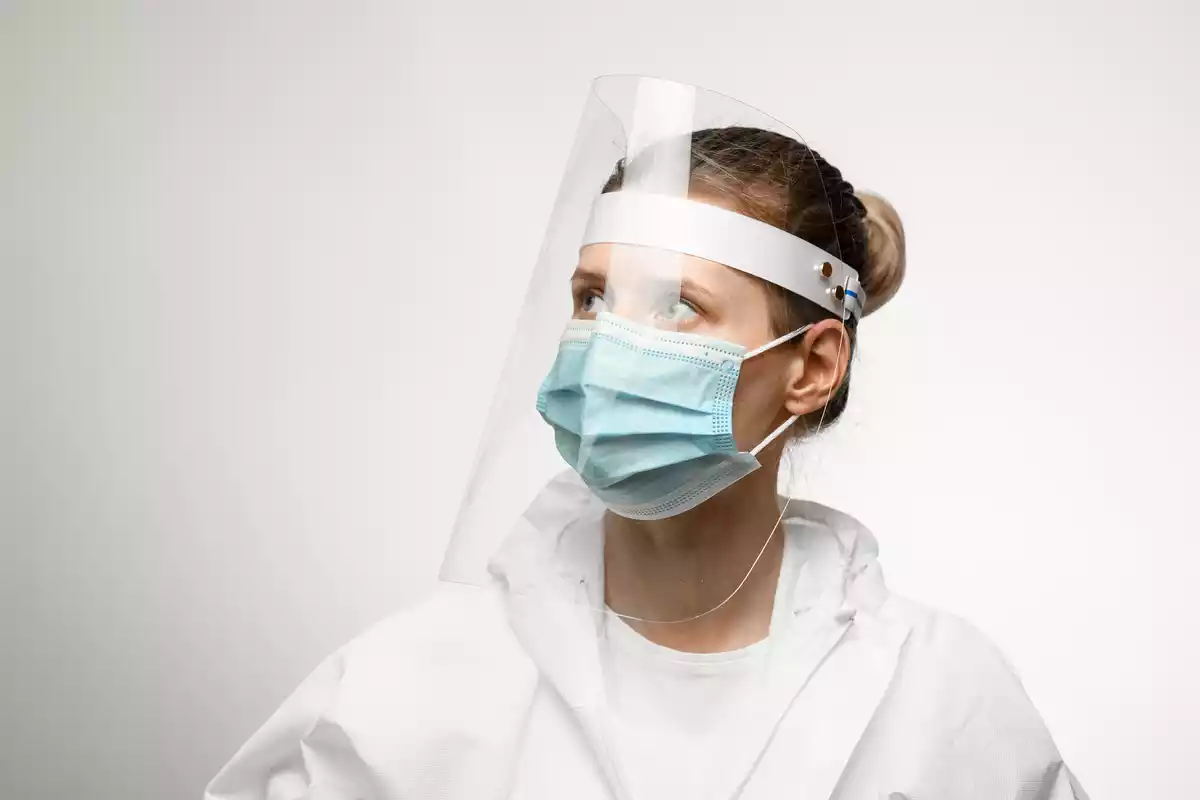
Experts have clarified whether coronavirus can be transmitted through the eyes. Almost every day, we receive new information and data on coronavirus and everything related to the pandemic.
For almost a year now, coronavirus has become the main topic in the media, on TV sets and on social networks.
Experts, virologists and scientists continue to put all their efforts into discovering new factors that can cause contagion. Thanks to these experts, we know that it is possible to become infected through droplets in the nose or mouth when sneezing, coughing or just talking.
However, the experts have also explained whether it is possible to become infected through the eyes. This is an issue that has been talked about since the pandemic began. Months ago several groups of experts from China started to carry out tests to find out whether this risk really exists.
As reported in The Lancet, Guangfa Wang, a pneumonia expert, explained that he caught COVID-19 using an N95 mask. However, the expert did not have eye protection and, days after infection, he also had red eyes.
The Lancet also explains that exposure to coronavirus without eye protection could increase the risk of transmission and, therefore, experts should wear protective goggles as well as a mask.
Several studies have shown that the mechanism of entry of coronavirus, which occurs via angiotensin-converting enzyme 2 (ACE2), is also present in eye cells and, therefore, patients may also have ocular manifestations.
This results in the following: COVID-19 transmission through the tear and ocular surface is entirely feasible.
Virus-infected aerosols contact the ocular surface, which subsequently also reaches the respiratory system since the conjunctival mucosa and the respiratory mucosa are connected through a duct.
According to an article in the British Journal of Ophthalmology, although the probability of infection through the ocular surface is low, it could cause discomfort such as conjunctivitis. That is why protection is essential.
What if I wear glasses?
All of us who wear glasses know how annoying it is to wear a mask with them. There is no way to prevent the lenses from fogging up and we can never see clearly. However, wearing glasses, in this case, could also be an advantage.
Several studies have shown that people who wear glasses are less susceptible to catching the disease than people who do not wear them.
As can be read in a study (not reviewed) published in MedRxiv and written by ophthalmologist Amit Kumar Saxena (from the NPCB Center in India), a test was performed on 304 patients, with and without glasses. As a result, the risk of coronavirus was 0.48 in people with glasses and 1.35 in people who do not wear them.
For his part, Javier Yanes, a doctor in Biochemistry and Molecular Biology, explained in 20minutos that eye protection is normally mentioned as an additional measure, but "it is not even mentioned as a simple recommendation". The expert explained that, although eye protection is an ignored measure, "it can reduce the risk of contagion by a third".
Ocular manifestations caused by COVID-19
While much has been said about respiratory problems throughout the pandemic, coronavirus can also cause ocular manifestations.
These problems can be caused both by the virus and by the change of habits acquired during the pandemic, as well as by the prolonged stay of patients in ICUs.
The media Europa Press explains that, according to a study in Radiology, eye abnormalities were found in people suffering from severe COVID-19. Although the best-known effect is conjunctivitis, retinopathy can also be an ocular manifestation due to coronavirus and it can lead to loss of vision.
[This is a translation of the original article "¿Es posible contagiarse de Covid-19 a través de los ojos?" published in espanadiario.net]

